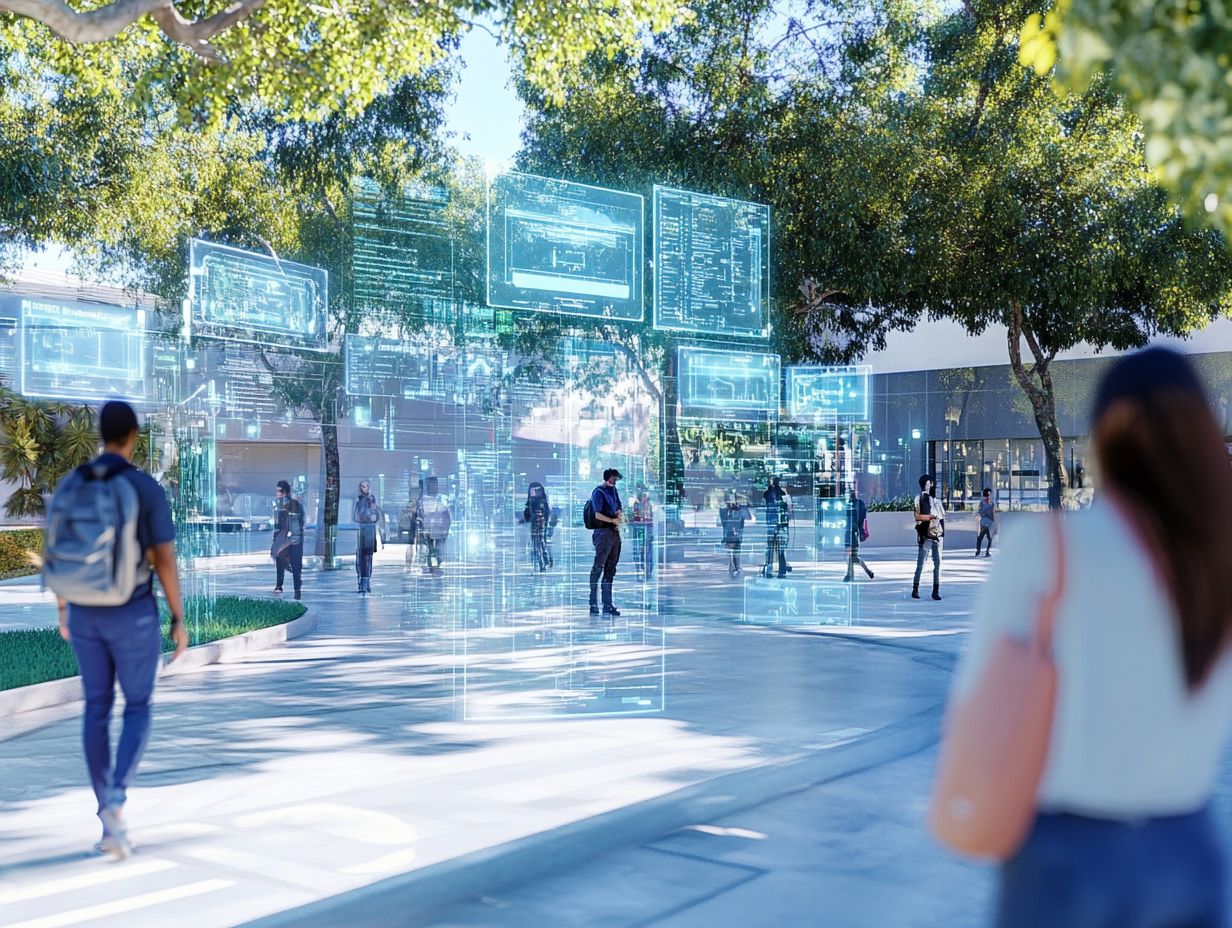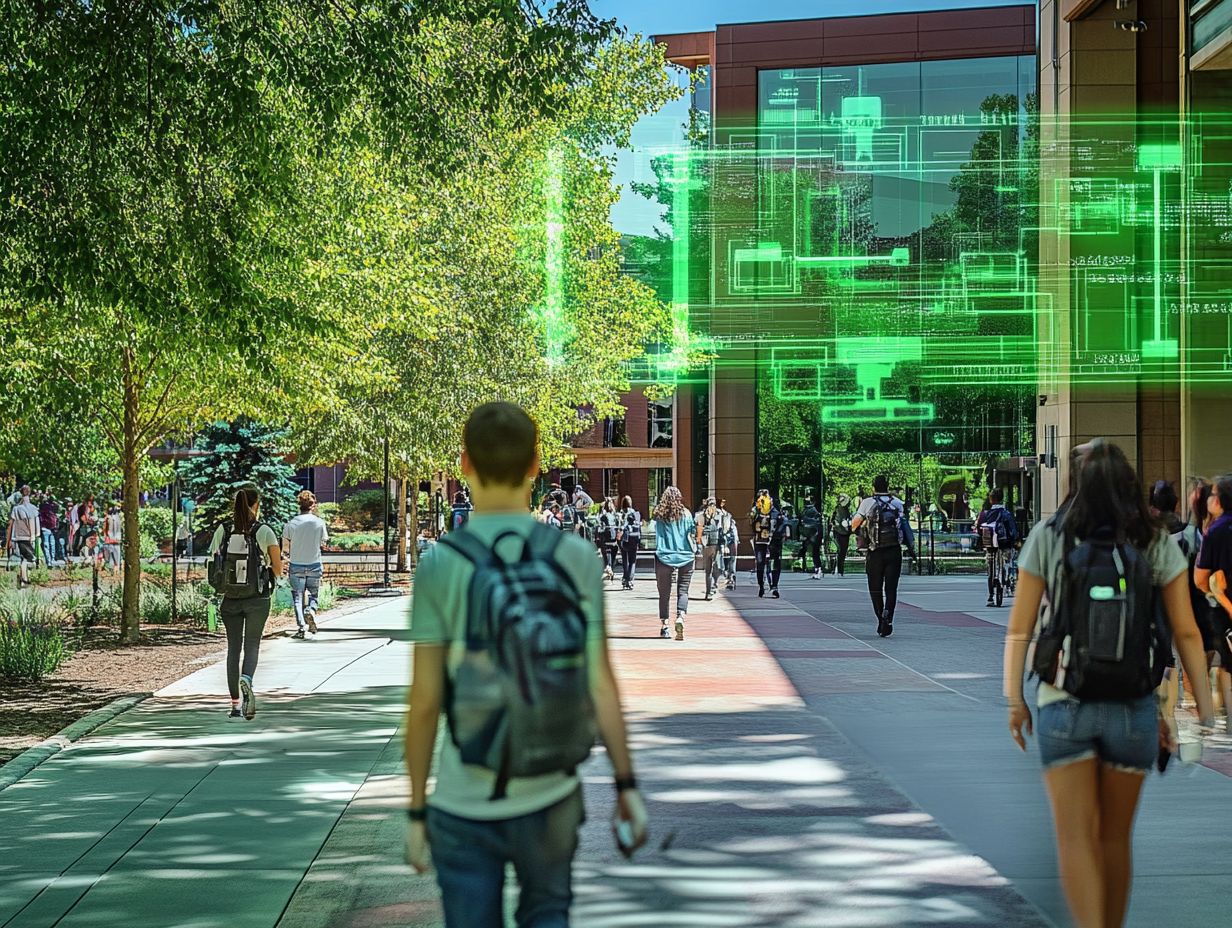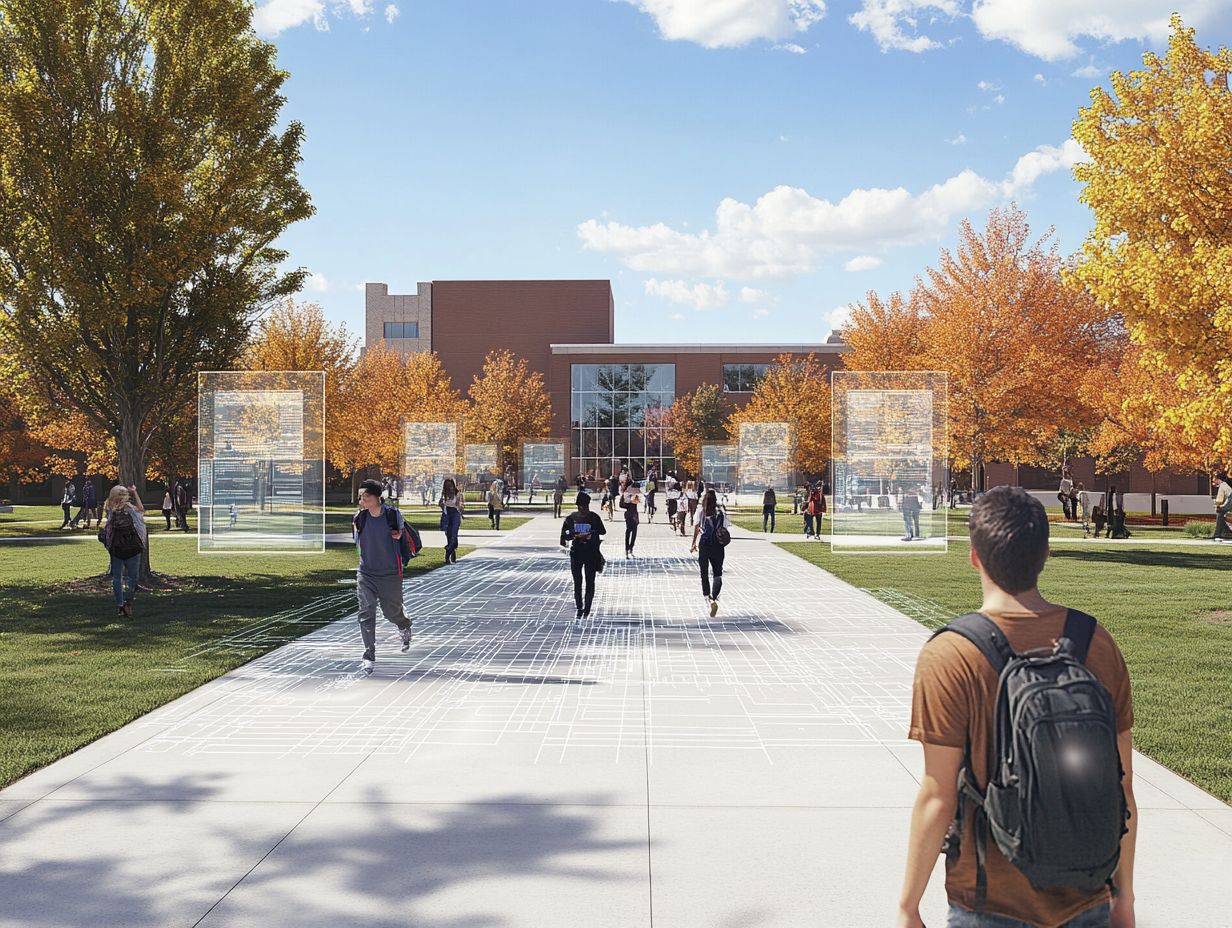In today’s academic institutions, where college campus safety is a significant concern, the role of visitor movement data in enhancing safety is critical. This article examines the benefits and limitations of using visitor movement data to create safer campus environments. It includes successful case studies of safety measures, such as risk assessment and security systems, implemented in response to data analysis, as well as an exploration of future possibilities and challenges in this area.
Importance of Ensuring Safety on Campus

Ensuring the safety of students and staff on college campuses is crucial for a conducive learning environment and involves comprehensive campus safety policies. Considering rising crime rates and concerns regarding emergency response, there is a pressing need for comprehensive safety protocols that integrate security systems with effective communication systems and emergency alerts strategies.
The significance of campus safety extends beyond merely preventing crime; it emphasizes the importance of fostering a sense of community safety and awareness through collaboration among students, faculty, and local law enforcement collaboration.
This holistic approach to campus safety not only addresses specific safety concerns but also cultivates a culture of awareness and preparedness.
Using Visitor Movement Data and Visitor Tracking for Campus Safety

Utilizing visitor movement data is essential for enhancing campus safety by providing actionable insights that inform security measures, crime prevention, and resource allocation.
Real-time tracking technologies and geospatial analysis enable universities to monitor pedestrian movement and identify potential safety hotspots, thereby optimizing campus security systems and transportation safety measures in response to emerging threats.
The integration of data analytics facilitates a proactive approach to visitor management and emergency preparedness, ensuring that safety protocols, including threat detection and intervention strategies, are both predictive and reactive.
As the adoption of technology continues to evolve, the potential for improving campus safety through data-driven decision-making is substantial.
Benefits and Limitations of Visitor Movement Data

Visitor movement data offers numerous benefits for crime prevention and campus safety; however, it also presents certain limitations that must be acknowledged. By conducting behavioral analyses and safety audits, institutions can leverage visitor movement data to make informed decisions that enhance risk assessment, crowd management, and improve campus safety.
Nonetheless, challenges related to data privacy concerns and the ethical implications of surveillance technology can hinder the effective integration of this data into safety guidelines, campus policies, and protocols. It is crucial to strike a balance between the advantages and limitations of visitor movement data to create a campus environment that is both secure and respectful of individual rights.
Analyzing visitor movement patterns can assist institutions in identifying higher-risk areas and times, thereby enhancing situational awareness and threat assessment capabilities for security personnel. This heightened awareness can lead to improved response strategies, enabling more targeted patrols and even preemptive actions.
Simultaneously, it is essential to consider limitations such as the potential for data breaches and unintended access. Ethical considerations, including ensuring transparency and obtaining consent in data collection practices, must be prioritized to protect the rights and privacy of individuals within the campus community, while engaging in thorough security audits. Engaging in a dialogue around these issues among stakeholders can foster solutions that uphold safety while respecting ethical standards.
Implementing Safety Measures Based on Data Analysis

The future of campus security is evolving through the implementation of safety measures informed by data analysis. By utilizing data analytics to examine campus security incidents and crime statistics, schools can devise strategies to prevent threats and enhance emergency responses.
With the aid of predictive analytics, spatial analysis, and robust incident management systems, institutions can create customized safety measures that are both dynamic and responsive to real-time data. This approach not only optimizes existing security infrastructure but also integrates advanced monitoring technologies that aid in identifying and responding to potential threats.
Examples of Successful Implementation
Numerous institutions have successfully implemented data-driven safety measures that have significantly enhanced their campus safety culture and reduced incidents of crime. For example, universities that have adopted advanced safety technologies, such as real-time monitoring and incident reporting systems, have demonstrated remarkable improvements in their ability to respond to emergencies and manage safety resources effectively.
Collaboration tools, mobile safety apps, and community outreach initiatives have also played a critical role in reinforcing a shared responsibility for campus safety among students and staff. These examples highlight the profound impact that strategically implemented safety measures can have in fostering a secure educational environment.
One notable case is the University of Arizona, which integrated a comprehensive data analytics platform to monitor campus incidents and access logs in real-time. By employing predictive analytics, the university was able to allocate security resources to high-risk areas, resulting in a 30% decrease in reported crimes over a two-year period. Additionally, the university engaged student organizations in safety audits, ensuring that the community had a voice in the safety protocols being established.
Similarly, the University of California, Berkeley, harnessed mobile app technology to enhance reporting mechanisms, allowing for anonymous submissions of safety concerns. These initiatives not only streamlined emergency response efforts but also fostered trust within the community, demonstrating that involving stakeholders is key to a successful safety strategy.
Future Possibilities and Challenges in Campus Security
The future of campus safety is poised for significant transformation with the ongoing development of safety technology, geo-fencing, and data analytics, which are expected to enhance crime prevention and emergency response.
The implementation of predictive analytics and crime mapping techniques will enable universities to identify potential threats and allocate resources more effectively before issues arise.
However, successful integration of these technologies will require careful infrastructure planning and a strong emphasis on safety education to ensure that all stakeholders are prepared to adapt to new systems.
Institutions will face a range of opportunities and challenges on their journey toward improved safety, and cultivating a robust campus safety culture and safety awareness will be essential for the sustained success of these initiatives.
Potential for Further Improvements and Obstacles
As institutions explore further development of campus safety through technology deployment and data collection methods, they may encounter several potential obstacles that could hinder progress.
The ever-changing landscape of safety regulations and compliance requirements can pose challenges, particularly as new technologies are integrated into existing systems. Engaging stakeholders and incorporating community feedback through safety surveys are essential for a comprehensive approach to safety and must be prioritized in any efforts to enhance campus safety in the future.
Continuous growth and improvement must be pursued alongside these challenges to ensure that advancements in campus safety, such as digital surveillance and smart campus solutions, are both meaningful and effective. To achieve this, educational organizations should establish a strategic framework that prioritizes immediate campus safety while also considering the long-term implications of new technologies.
Collaboration among administrators, students, faculty, and local law enforcement will be crucial in developing specific safety protocols and emergency communication systems that work for everyone. Additionally, securing adequate funding and resources, including safety technology and personal safety devices, often presents another barrier as institutions strive to implement new safety measures.





